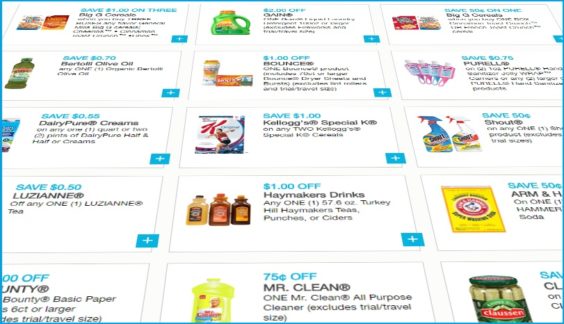
You may not be up on all the latest hot food trends, following your hipster neighbors to the organic food store to stock up on ancient grains, artesian water, tuna poke and cauliflower rice. But those people aren’t saving money on their groceries – you are!
That doesn’t mean you have to settle for the bland and boring, though, just to save money. According to a new study, clipping coupons and shopping adventurously aren’t necessarily mutually exclusive activities. On the contrary – if you’re a digital or printable coupon user, you may be among the most adventurous shoppers of all, trying a lot of new products and saving a lot of money in the process.
That finding comes from a study conducted by Quotient, the parent company of Coupons.com, in partnership with the research firm GfK. In the study, “Digital Coupon Redeemer: New Product Adoption,” digital coupons are defined as any coupon you have to go online to receive. So load-to-card and print-at-home coupons are “digital”, while newspaper insert coupons are not.
So with that technicality out of the way, the study finds that shoppers who use digital coupons are twice as likely to try new products as the average shopper. And once they buy a new product with a coupon, they’re more likely to become repeat buyers.
Why? A separate study says it’s because digital coupons for new products are some of the best coupons out there.
In its own recent report, “New Product Promotion Trends,” Kantar Media found that digital coupons for new products are much better than newspaper insert coupons for some of the very same products. The average face value per unit for digital new-product coupons last year was $2.33 – a huge difference from the overall average digital coupon value of $1.54. Among insert new-product coupons, though, the average face value per unit was just $1.74 – 59 cents less than digital, and even less than the overall average insert coupon value of $1.80.
So in other words, in order to incentivize you to try a brand-new product, manufacturers offering insert coupons counterintuitively made them even less lucrative than coupons for existing products. Figure that one out.
In addition, insert coupons for new products are expiring sooner – the average expiration lengths declined last year to 6.9 from 7.6 weeks. Digital new-product coupons still expire somewhat sooner, but their expiration lengths increased, from 5.6 to 5.8 weeks.
Overall, it’s no wonder digital coupon users are buying more new products. Big incentives mean smaller risks – if you try a new product and didn’t have to pay much for it, it’s no big loss if you don’t like it. And if you do like it, it didn’t cost you much to find out. “To some consumers, monetary incentives, particularly large ones, offset the risk of new product trial,” the Kantar report reads. “To others it can create an opportunity to try a product that may not fit within their normal budget limits.”
So brands offering coupons are increasingly going where their most likely new customers are. Kantar found that digital coupons were offered for 80% of all new products launched last year. Newspaper inserts have greater reach, making their way to some 70 million households a month, but many recipients ignore the inserts or toss them. 16 million people, meanwhile, access coupon websites each month. They’re not passive recipients of insert coupons, but shoppers who are actively looking for deals. Brands that offer digital coupons – particularly eye-catching, high-value offers – can target the very shoppers who are more inclined to try their new products, given the right incentive.
“Digital coupons are a hook and hold strategy,”said Neal Heffernan, GfK’s Senior Vice President of Shopper and Retail Strategy. “Shoppers who use them, try new products more often and are more often happier with their purchase and continue to repeat at a faster rate than the national average.” Added Quotient President and COO Mir Aamir, “Shoppers who use digital coupons are powerful buyers, and they are more likely to buy products again and again.”
In the first year alone, according to Nielsen, manufacturers typically spend up to $160 million on advertising for a new product. And the vast majority of those new products don’t make it to a second year. High-value coupons may cost manufacturers some money in the short term – but considering the alternative, offering you some significant savings now, may be well worth it in the long run.










